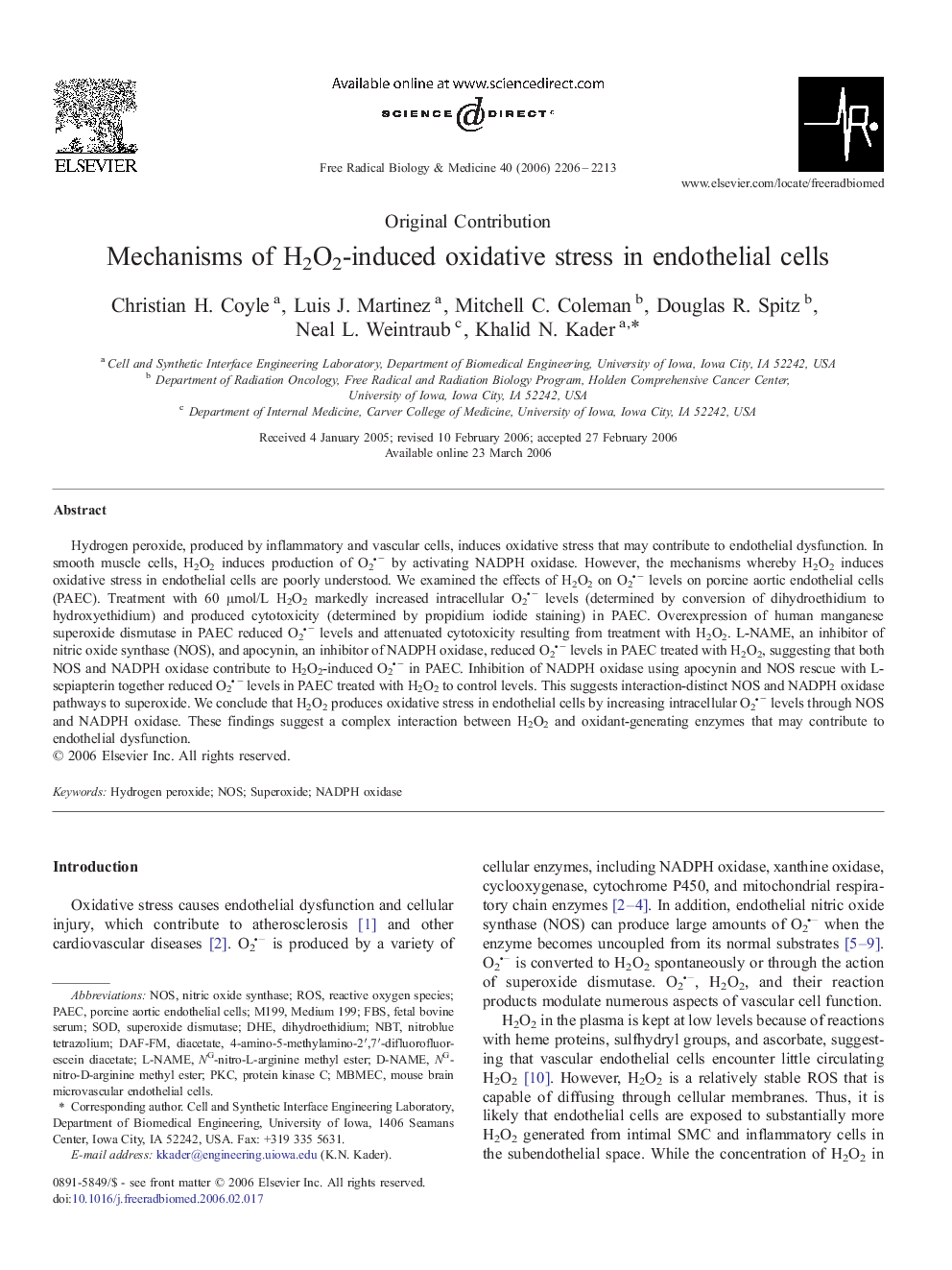| Article ID | Journal | Published Year | Pages | File Type |
|---|---|---|---|---|
| 1912136 | Free Radical Biology and Medicine | 2006 | 8 Pages |
Hydrogen peroxide, produced by inflammatory and vascular cells, induces oxidative stress that may contribute to endothelial dysfunction. In smooth muscle cells, H2O2 induces production of O2− by activating NADPH oxidase. However, the mechanisms whereby H2O2 induces oxidative stress in endothelial cells are poorly understood. We examined the effects of H2O2 on O2− levels on porcine aortic endothelial cells (PAEC). Treatment with 60 μmol/L H2O2 markedly increased intracellular O2− levels (determined by conversion of dihydroethidium to hydroxyethidium) and produced cytotoxicity (determined by propidium iodide staining) in PAEC. Overexpression of human manganese superoxide dismutase in PAEC reduced O2− levels and attenuated cytotoxicity resulting from treatment with H2O2. L-NAME, an inhibitor of nitric oxide synthase (NOS), and apocynin, an inhibitor of NADPH oxidase, reduced O2− levels in PAEC treated with H2O2, suggesting that both NOS and NADPH oxidase contribute to H2O2-induced O2− in PAEC. Inhibition of NADPH oxidase using apocynin and NOS rescue with L-sepiapterin together reduced O2− levels in PAEC treated with H2O2 to control levels. This suggests interaction-distinct NOS and NADPH oxidase pathways to superoxide. We conclude that H2O2 produces oxidative stress in endothelial cells by increasing intracellular O2− levels through NOS and NADPH oxidase. These findings suggest a complex interaction between H2O2 and oxidant-generating enzymes that may contribute to endothelial dysfunction.
